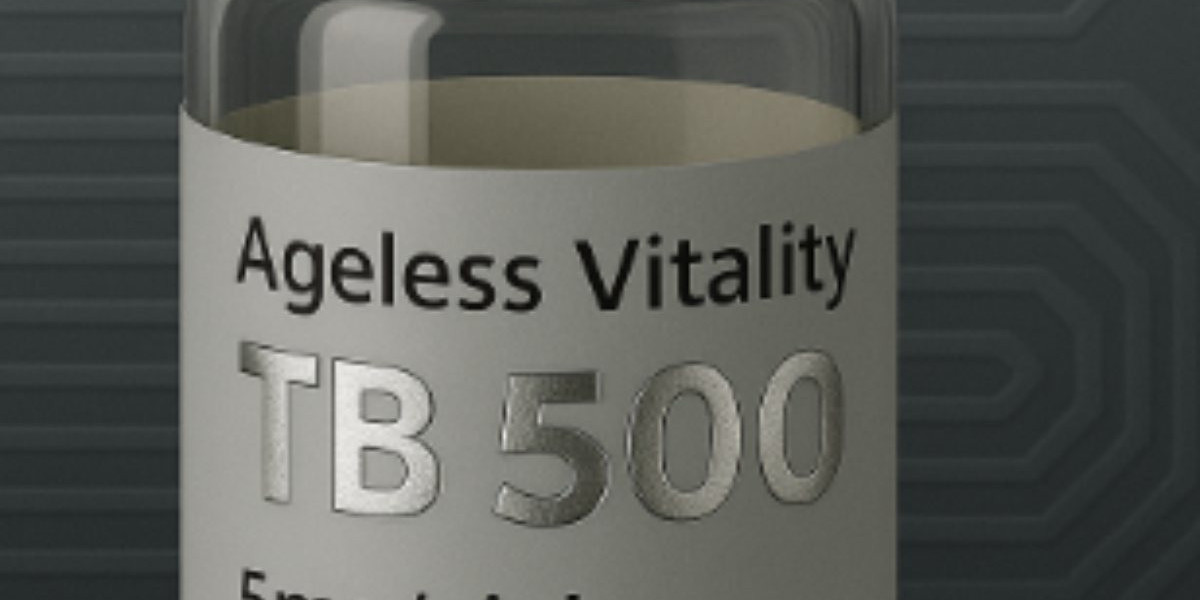In scientific environments focused on tissue repair and recovery studies, Peptide Serum TB-500 has become a recurring compound of interest. Known as a synthetic form of Thymosin Beta-4, TB-500 is often examined in tendon and joint injury simulations for its potential to support cellular mobilization, tissue remodeling, and inflammation response pathways.
While strictly intended for research use only and not approved for human application, TB-500 is frequently utilized in controlled experimental models involving musculoskeletal recovery, particularly in tendon and joint-related scenarios.
What Makes TB-500 Relevant in Joint and Tendon Research?
Research surrounding TB-500 peptide serum has primarily focused on its reported ability to promote cell migration, a crucial factor in tissue healing studies. TB-500 is evaluated for its potential role in:
Actin-binding and mobilization
Fibroblast movement in injured tissue models
Formation of new blood vessels (angiogenesis)
Reduction of inflammatory markers in lab trials
These properties make it a valuable compound in studies designed to simulate tendon strain, ligament injuries, and joint stress conditions.
Understanding Its Mechanism: How TB-500 Works in Tissue Repair Studies
TB-500 is believed to influence G-actin (globular actin), a protein essential for cytoskeletal structure and cell movement. This interaction may support tissue regeneration models where fibroblast mobilization is necessary.
In tendon recovery experiments, fibroblasts play a role in collagen production, which contributes to structural repair. Because of this, TB-500 is frequently used as part of research focused on soft tissue regeneration.
Tendon Recovery Studies Involving TB-500
Several research settings explore TB-500’s involvement in tendon-related recovery processes due to its proposed effects on:
✔ Flexor tendon regeneration
✔ Reduced scar tissue formation (varied by model)
✔ Enhanced blood flow to damaged areas
✔ Synovial membrane recovery
These trials often compare TB-500 alongside other recovery-focused peptides such as BPC-157 or IGF-1 LR3 to understand differences in tendon healing support under simulated laboratory stress conditions.
Joint Repair Models and TB-500 Serum
In experimental joint recovery models, TB-500 peptide serum has gained relevance due to potential observations associated with:
Inflammation support in joint capsule studies
Cartilage preservation in degenerative models
Accelerated cellular response around connective tissues
Improved vascularization for nutrient delivery
While these observations vary based on study design, TB-500 remains a core component of research focused on soft tissue joint repair.
TB-500 vs Other Recovery Peptides in Tendon Research
Peptide | Area of Interest | Mechanism Focus | Common Study Type |
TB-500 Peptide Serum | Tendon & joint recovery | Actin-based cell migration | Soft tissue regeneration |
BPC-157 | Tendon recovery & GI repair | Angiogenesis & fibroblast activity | Connective tissue regeneration |
IGF-1 LR3 | Muscle growth models | Protein synthesis & muscle repair | Hypertrophy simulations |
This comparison highlights why researchers may choose TB-500 peptide for tendon and joint repair research when studying cellular mobilization and vascular responses.
?? Why U.S. Laboratories Prefer TB-500 Peptide Serum
There is rising demand for TB-500 peptide serum USA due to its frequent appearance in musculoskeletal recovery research. Laboratories often prioritize high-purity, third-party tested sources to ensure consistent data output and reproducibility in tendon and joint healing simulations.
Conclusion
Peptide Serum TB-500 remains a prominent research compound in tendon and joint recovery studies due to its reported ability to support cell migration, fibroblast activity, and angiogenesis under injury-mimicking conditions. Although strictly for research use only, its significance in laboratory settings continues to grow, especially within the fields of tissue regeneration and musculoskeletal recovery modeling.
Selecting a reliable, lab-grade TB-500 research peptide supplier with verified purity plays a key role in achieving accurate, dependable study outcomes.
Frequently Asked Questions (FAQs)
Q1: Why is TB-500 commonly used in tendon healing models?
Researchers often examine TB-500 for its reported role in cellular migration and tissue repair.
Q2: Does TB-500 play a role in joint recovery studies?
Yes, TB-500 is frequently evaluated in studies related to joint inflammation and soft tissue restoration.
Q3: Can TB-500 be used for human consumption?
No, it is strictly for research purposes and not approved for medical or human use.
Q4: What makes TB-500 suitable for tendon experiments?
Its potential impact on angiogenesis and fibroblast mobilization makes it suitable for tendon-based models.
Q5: Why do U.S. research labs often use TB-500 peptide serum?
Due to its consistent role in recovery-focused studies, TB-500 is widely used in USA-based research environments requiring tissue regeneration models.





